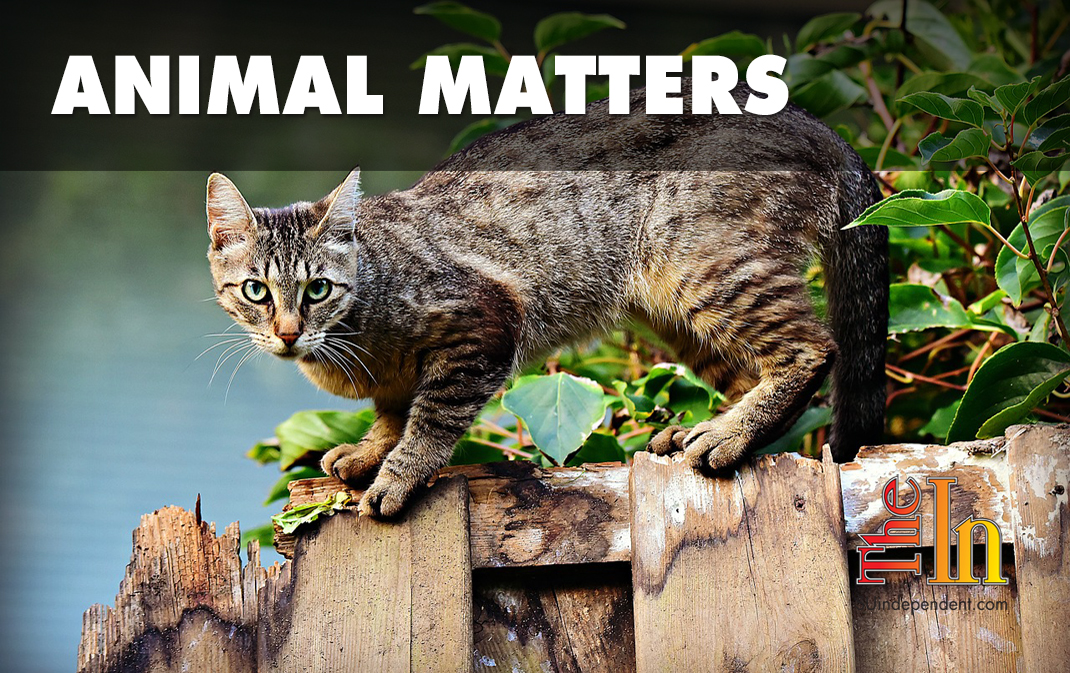
Free spaying and neutering programs help both feline and human populations
By Kris Neal
You have a stray cat in your yard who looks skinny and hungry, so you put a bowl of leftovers out for him. He is back the next day, and you open a can of tuna, followed by a trip to the store for a bag of food, and you lovingly name him Sam.
Next thing you know, Sam comes to dinner with four kittens who you can’t get close to. You realize that Sam is Samantha, and it didn’t occur to you to get her fixed.
You call the shelter, armed with the knowledge they are no-kill and will find Samantha’s kittens loving homes only to learn that they will not take them as they are not adoptable — they are feral.
The shelter gives you the number of a local trap/neuter/return group and explains that Samantha and her babies all need to be fixed and returned to your yard.
You’re calculating the cost of this, and just as your head is about to explode, you are told that there is a free service to get the feral cats fixed. With a lump in your throat, you make the call and find you are not alone but part of a very large, compassionate group of Samaritans known as community cat caregivers.
Nobody knows for sure how many feral cats there are in America. But estimates range in the area of 70 million. Stray and feral cats, also known as community cats, are the result of people abandoning their unsterilized pet cats. These cats breed, producing kittens who fear humans. Community cats live where there is a food source, be it a parking lot, restaurants, hotels, industrial centers, or back yards. With Washington County’s mild climate, cats flourish and breed year round, producing several litters a year with most of the kittens surviving. A conservative estimation shows that one unfixed cat, her mate, and four kittens will produce 12,000 cats in three years. There is no shortage of feral cats.
Historically, feral cats have been trapped, taken to shelters, and killed. The decades-old practice of eradicating feral cats has not put a dent in the cat population. To the contrary, the numbers have increased to the point that many cities across the country have examined their practice of killing feral cats and found overwhelming evidence that lethal methods are not only costly but also ineffective and publicly unpalatable. As with all wildlife, the remaining cats overbreed to keep their population stable. The resources used by the original cats remain and attract new unfixed cats, so the cycle never ends, and we have more and more cats
Honestly, no community has ever or will ever kill their way out of the feral cat problem, just as a shelter cannot be truly no-kill without addressing the feral cat problem. There are just too many of them. They are not adoptable, and who is going to do this kind of work?
Cities nationwide including St. George and Ivins have looked to humane solutions and found trap-neuter-return, or TNR, to be an effective and humane approach to cat population control that at the same time addresses nuisance complaints associated with feral cats along with encouraging volunteerism rather than using taxpayer dollars. With TNR, the cats are trapped, spayed or neutered, and vaccinated. The tip of one ear is removed under anesthesia, marking them as a fixed cats, and they are returned to their habitats where caregivers freely give their time and resources feeding the cats, monitoring their health, and fixing any newcomers. The cats’ ability to breed is taken away, the resources are guarded by the fixed cats, and they die out through attrition.
Shelters that work with TNR groups or operate their own TNR programs, such as St. George and Ivins shelters, do not take in or kill feral cats, allowing them to practice the no-kill philosophy.
The elephant in the room is birds. There’s no doubt that feral cats eat, and birds may be on the diet. But the truth of the matter, despite what various Audubon groups would like us to think, is that man is the No. 1 cause of the decline in the bird population in the U.S.
Loss of habitat tops the list. Yes, there is a strip mall where their home once was. There are more birds killed from window strikes than by cats, followed by pesticides, power lines, and automobiles. Raccoons are particularly hard on bird eggs and chicks. I recently put my game camera on a gentleman’s koi pond to show him that raccoons were eating his fish, not cats. Truthfully, feral cats are lazy and opportunistic and prefer handouts on a dish or what can be gleaned from a dumpster. They eat what is easily available, what they can most easily catch, and what is close to where they live. They generally do not hunt for sport but for food, and rodents top the menu.
The bottom line is the fewer the cats, the less the predation.
With our country’s feet firmly planted in achieving no-kill, those who used to be a handful of crazy cat ladies out fixing cats have become well organized groups of TNR teams. One More Chance (C.A.T.S.), partnered with Best Friends Animal Society, has put a dent in the community cat population, and no healthy cat has been killed in our local shelters in years. There are a variety of services ranging from loaning traps, free spaying and neutering and free vaccinations for community cats, mentoring on responsible cat management, complaint resolution, access to the community cat food pantry, and resources for low cost pet spaying and neuter.
If you are the person feeding that one skinny cat, breeding season is here. Now is the time to make the call, not when you have a Samantha and her babies.
For information and assistance on trapping, free spaying and neutering services for community cats, and low-cost programs for pet cats, please call me at (435) 619-4712.
Kris Neal is a longtime resident of St. George who operates One More Chance (C.A.T.S.), an animal rescue organization whose goal is to reduce the population of the feral cats in Washington County through comprehensive trapping, neutering, and return. She also has a feral cat sanctuary that is home to cats that have lost limbs to leg-hold traps.
Articles related to “Free spaying and neutering programs help both feline and human populations”
What’s wrong with giving a home to a puppy or kitten from the online classifieds?




Great and informative article. Easy to understand and reads like a story not a thesis. Is it okay to share this article around? I am a community cat caretaker. Thanks.